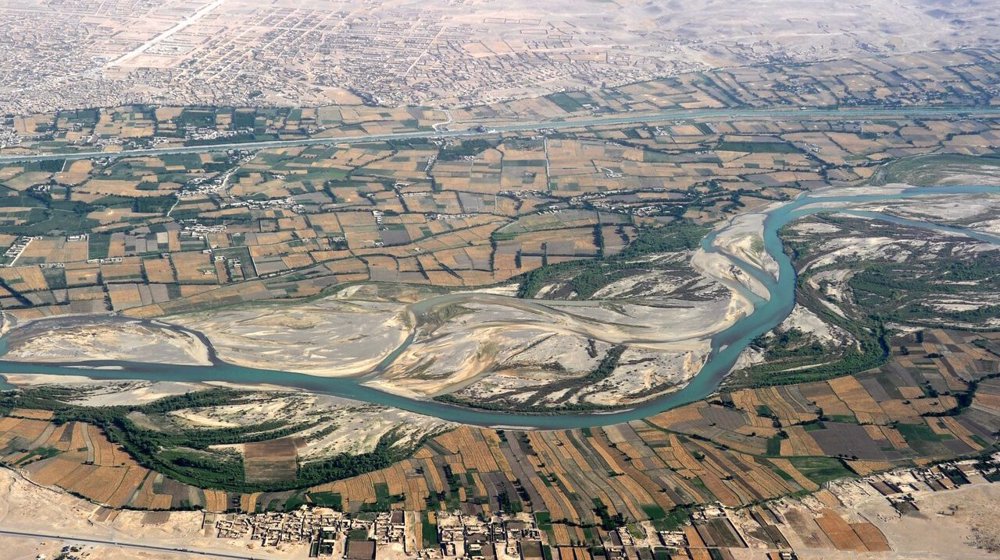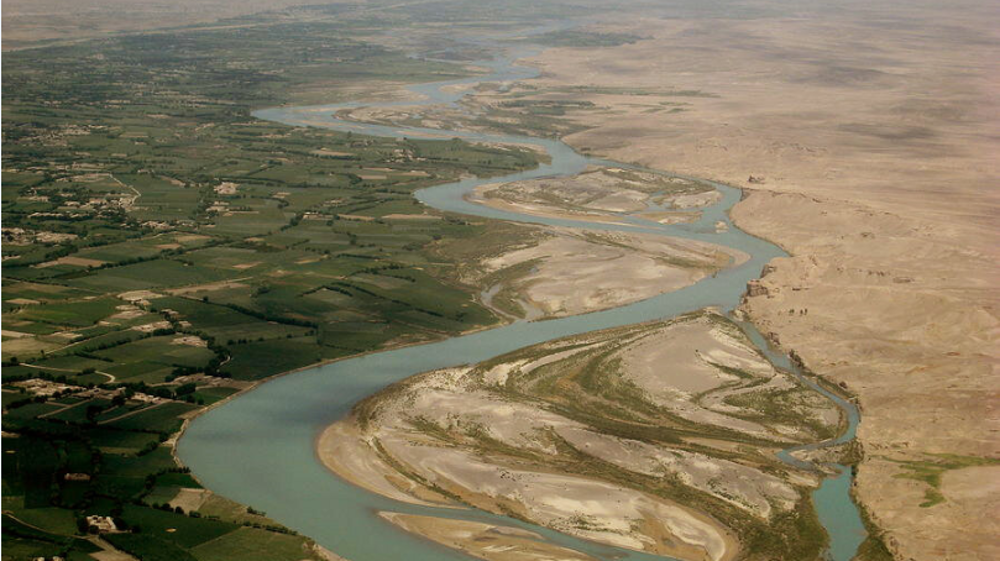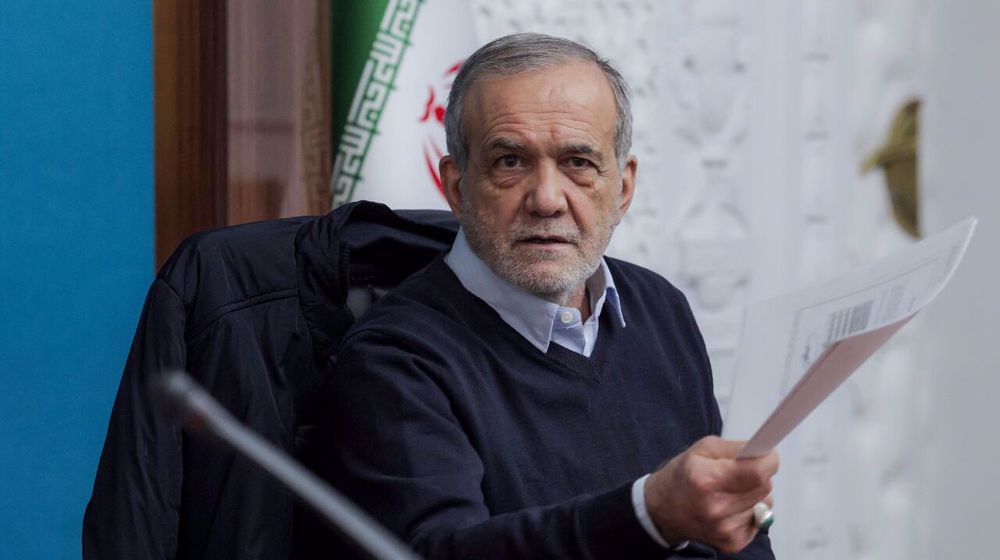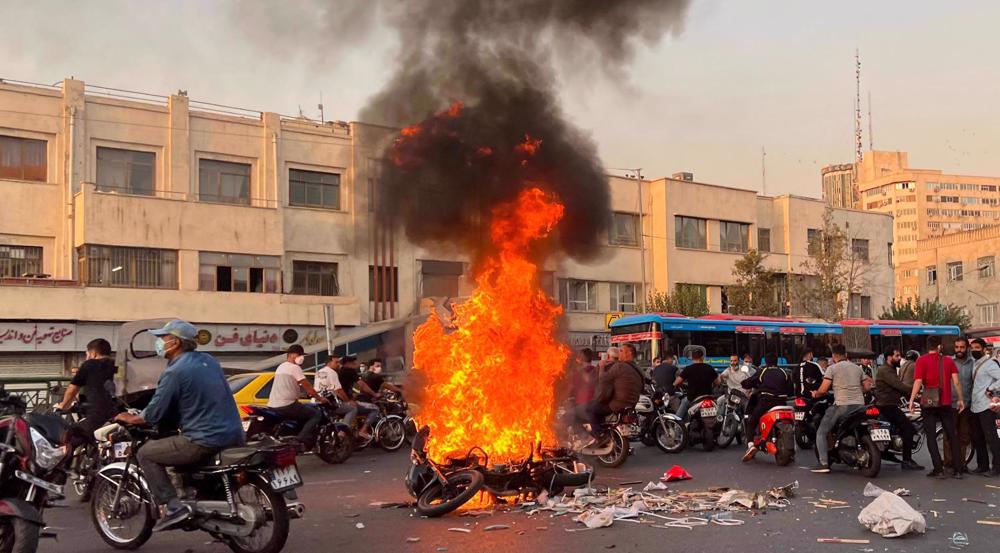Iran-Afghanistan dispute over shared water resources and way out
By Press TV Staff Writer
Iran and Afghanistan, two neighboring South Asian countries, have no major territorial disputes, but a festering disagreement over the allocation of shared water resources has plagued their relations for two centuries.
Recently, the problem has become even more pronounced amid long spells of drought in southeastern Iran, forcing Iranian authorities to step up pressure on the de-facto Taliban government in Kabul to give Iran its share of water from the Helmand River.
Disputes over water between Iran and Afghanistan date to the 1870s when Afghanistan was under British control. A British officer drew the Iran-Afghan border along the main branch of the Helmand River, which also saw Herat separate from Iran.
In 1939, the Iranian and Afghan governments signed a treaty on sharing the river’s water, but the Afghans failed to ratify it.
In 1973, the two sides finally signed an accord that accepted the flow of water into Iran at 22 cubic meters per second or 820 million cubic meters of water a year with an option for Iran to purchase an additional four cubic meters per second in “normal” water years.
However, the agreement was neither ratified nor fully implemented due to political developments, including a 1973 coup in Afghanistan, the Soviet occupation of Afghanistan that same year, and finally the rise of the Taliban in 1995.
With Afghanistan at war for the past 40 years, the supply has been erratic. Severe drought across much of Afghanistan is spurring plans to build new dams, aggravating tensions with Iran. Tehran had already voiced concern that the huge Indian-financed Salma Dam in western Herat province, inaugurated in 2016, would see its water supplies reduced.
At the center of the dispute, however, is the Helmand River, which runs through much of Afghanistan from its source in the mountains north of Kabul, feeding the Sistan wetlands in the border regions of the two countries.

Since the Taliban took over in 2021, authorities in Kabul have emphasized adherence to the Helmand treaty, but in practice, Iran has not received its due share of water from the river.
Last summer, Iranian Minister of Energy Ali Akbar Mehrabian traveled to Kabul at the head of a delegation to discuss water supplies from the Helmand and secure assurances that the flow from the river would reach Iran, generating hopes of a breakthrough.
However, various factors influence the implementation of the treaty, with the policies and methods of the governments in Afghanistan, the needs of the country and issues related to climate change and various other factors being at play.
Experts say the problem is rooted in Afghanistan's instability and frequent changes of rulership, where each government treats Iran’s rights according to its preferences.
According to Ahmad Bakhshi, an expert on Afghan affairs and a university professor, protracted wars in Afghanistan and the lack of supervision by the central government have seen numerous diversion channels constructed on the Helmand River.
“Afghanistan has never seen a peaceful or stable government in reality. At one point, the excuse of the Afghan government was that there was little water in upstream, but then [former president] Ashraf Ghani himself said in an official speech that Iran had to give oil in order to get water,” he said.
“In other words, when you look at the different governments of Afghanistan, you realize that they do not look at the agreement under which Iran and Afghanistan should fulfill their obligations, but they bring up political issues. Even when there is stability in Afghanistan and there is law and order, these issues are raised."
The governments in Afghanistan are emboldened by the public opinion which mostly believes any water originating in the country should be allocated to Afghans.
Afghanistan, a country where nearly 20 million people rely on farming, has seen a steep drop in agricultural output as the drought has bitten. Officials say they need extra dams to feed its agriculture sector, the mainstay of the $20 billion economy.
“The area where Helmand River is located is a low rainfall area. Also, the provinces adjacent to the river have a series of needs, and you do not see much adherence to international obligations in the demands of their public opinion. For example, they say that Helmand water should not flow out of Afghanistan,” Bakhshi said.
Hence, successive Afghan governments have sought to bolster agriculture by constructing irrigation canals and dams in the Helmand Valley.
In 1946, the Afghan government brought in US firm Morrison-Knudsen in to build irrigation systems in Helmand.

Halfway through rehabilitating old canals, Morrison-Knudsen suggested that to make the best use of water, a storage dam and reservoir should be built. The work was done without an environmental assessment, which turned out to be a “fatal weakness” of the project, according to a subsequent study by the US Agency for International Development.
Iranian suffering
The Helmand is the longest river in Afghanistan, constituting over 40 percent of Afghanistan’s surface water. It stretches for 1,150 km from the Hindu Kush mountains into Hamoun wetlands which once supported great plant and animal diversity in Iran’s Sistan Basin.
The construction of numerous dams and canals in Helmand as well as Nimruz and Kandahar has constantly depleted the flowing water level, as a result of which the Hamoun lakes have nearly disappeared with their exotic flora and fauna.
The situation was aggravated when Taliban authorities choked off water from the Kajaki dam to Iran from 1998-2001 at a time of the region’s worst droughts.
Dust storms from the dried Hamoun lakes have caused a serious public health crisis in Iran. The region’s economy has been gravely impacted, and thousands of villagers have moved to cities for survival. The deteriorating economic situation, unemployment, and the loss of income from agriculture in both countries have spawned the trafficking of illegal drugs originating from Afghanistan.
The opening of Kamal Khan Dam by former president Ghani in March 2021 further complicated the situation. The dam has been built on the lower Helmand River in Nimruz province.
According to the 1973 treaty, Helmand water is measured at the Kamal Khan dam and shared between Iran and Afghanistan.
Iran’s Ambassador Hasan Kazemi Qomi says the Kamal Khan is a diversion dam embedded with a detour route that channels overflowing water to Gowdzare salt marsh in Afghanistan. This means water flow from Helmand to Iran has now shrunk to a trickle.
“During a year of negotiations with the Afghans, especially in the recent talks and the meeting with the foreign minister of the Taliban government, they expressed regret about the wastage of water and attributed it to technical problems of the Kamal Khan dam,” he told video news agency Iran Press.
Kazemi Qomi hoped for practical measures to be taken by the Taliban to block the detour, saying Iran is ready to help fix it.
Occupation and mismanagement
Years of war and occupation by the US and other powers have left Afghanistan in ruins where successive governments have failed to establish an efficient system of water storage and management.
Iran has been on the receiving end of the crisis, where millions of Afghan refugees and immigrants, mostly undocumented, have saddled the country with a massive social and economic burden for decades under the most draconian Western sanctions.
For many years, Afghanistan has been the world’s largest opium producer, and Iran has devoted enormous resources to fighting drug trafficking.
The crisis has increased Iranian resentment, where some people have accused Afghanistan of “wasting Iran’s share of water” on poppy cultivation and letting water flow to Iran only in times of floods.
A member of parliament from Torbat-e Heydarieh in Iran’s Khorasan province is on record to have said, “We have close to 4 million Afghans in Iran. If each person uses daily 100 liters [of water], the Afghans living in Iran use 400 million liters.”
Nevertheless, the general attitude of the Iranian people and establishment towards the people of Afghanistan is that of support and understanding. Under an order by Leader of the Islamic Revolution Ayatollah Seyyed Ali Khamenei, all Afghan children should have access to free education irrespective of their immigration status.
The Islamic Republic has also spent millions of dollars on development and reconstruction projects in Afghanistan. It has built hundreds of kilometers of highways and railroads. Even under US allies at the helm in Afghanistan, Iran's development projects did not stop in the war-torn country.
Tehran was one of the largest donors at a 2002 Tokyo conference, pledging more than India, Saudi Arabia, the United Arab Emirates, Turkey, Norway, Switzerland, Australia, and Pakistan combined.
Solution
Still, the tension between Iran and Afghanistan is likely to increase over water resources if they do not take serious steps to address and resolve their dispute once and for all.
The only way ahead for the two countries is to move towards intelligent management of water resources and use international aid to achieve it.
To begin with, they should reach a conclusion on the agreement they have signed and clarify its articles. Later, they should act systematically to efficiently manage their water resources. Without proper water management, the impact of climate change will be even more severe.
To this end, it is essential for the two countries to expand communication channels and properly manage joint projects and invest in improving the water management systems of both countries.
In the absence of proper management, one of the parties would tend to compensate for the waste of its water resources from the other's water right. They must come to the conclusion that a sustainable solution to their dispute is one that provides for the interests of both parties in a conventional and fair manner.
Israeli military kills Palestinian teen in southern Gaza despite truce
Recent terrorist war on Iran similar to Israel’s pager attack on Lebanon: Qalibaf
VIDEO | Thousands rally in Kargil against US, Israel 'interference' in Iran
Hamas blasts ‘torture and brutality’ against Palestinian prisoners in Israeli jails
Truth as first casualty: Deconstructing disinformation campaign on Iran riots death toll
Surrender, humiliation have no place in our lexicon: Lebanese MP
VIDEO | Press TV's news headlines
Fake deaths and celebs: Inside the farcical info war against Iran amid foreign-backed riots












 This makes it easy to access the Press TV website
This makes it easy to access the Press TV website